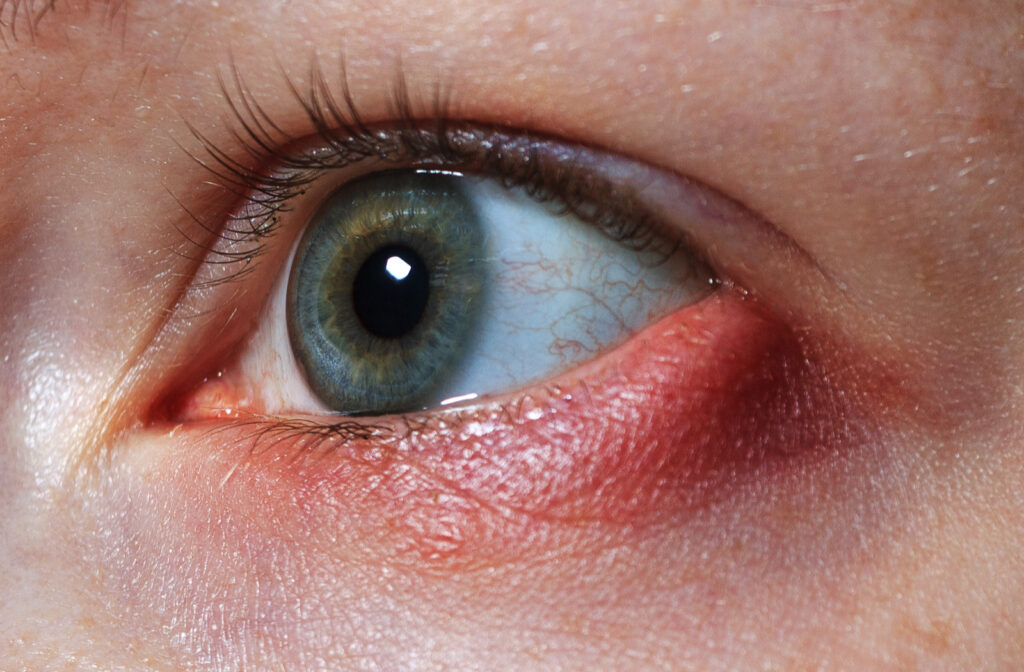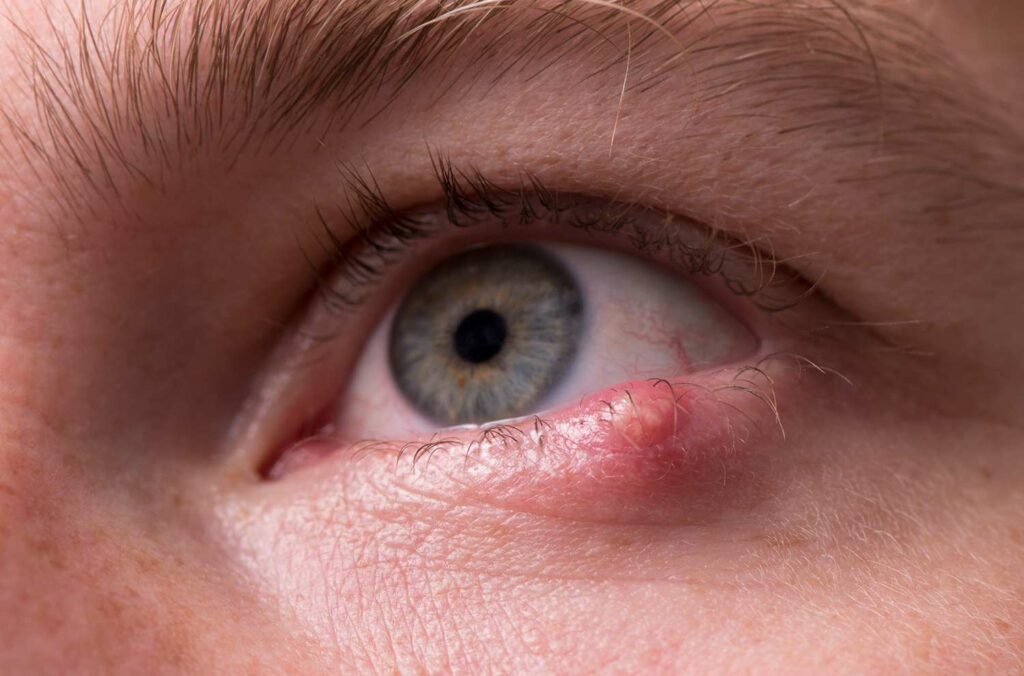A stye is a common eye infection that can cause discomfort, redness, and swelling on your eyelid. Although styes may seem minor, it can significantly impact your daily life. Knowing the causes, symptoms, prevention methods, and treatments can help you manage this eye health issue effectively. Learn details of what a stye is, how to prevent it, and what steps to take if you have one.
What is a Stye?
A stye (also known as a hordeolum) is a small, painful bump that appears on the eyelid, typically near the base of your eyelashes. This bump forms when an oil gland or hair follicle becomes infected, usually by the bacteria Staphylococcus aureus. Styes can occur on the outer eyelid (external hordeolum) or the inner eyelid (internal hordeolum). Though styes are usually harmless, they can cause significant irritation and may interfere with your vision if left untreated.
Causes of Styes
Styes are primarily caused by bacterial infections, but several factors can increase your risk of developing this eye infection:
- Poor Eyelid Hygiene: Not cleaning your eyelids or removing makeup can lead to clogged oil glands.
- Touching Your Eyes with Dirty Hands: Bacteria from unwashed hands can easily infect your eyelid glands.
- Blepharitis: Inflammation of the eyelids, which can make styes more likely.
- Contact Lenses: Using improperly cleaned contact lenses can introduce bacteria to your eyes.
- Stress and Hormonal Changes: These can weaken your immune system, making you more prone to infections.
- Winter Conditions: Dry, cold air during winter can lead to increased eye irritation and infections.

Symptoms of a Stye
The symptoms of a stye are easy to identify. Common signs include:
- Redness and Swelling: The affected eyelid becomes red and swollen.
- Pain and Tenderness: The bump is typically sensitive to the touch.
- Watery Eyes: Excessive tearing can occur.
- Crusting Around the Eyelid: A crust may form along the eyelid margin.
- Light Sensitivity: Some people experience discomfort in bright light.
Prevention Tips for Styes
Preventing styes involve maintaining good eyecare habits and hygiene. Here are practical steps to reduce your risk:
- Wash Your Hands Regularly: Frequent handwashing is essential to prevent bacteria from getting into your eyes.
- Keep Your Eyelids Clean: Remove makeup before bed and wash your eyelids gently with warm water and mild soap.
- Avoid Touching Your Eyes: Refrain from rubbing your eyes, especially with dirty hands.
- Proper Contact Lens Care: Clean your contact lenses as directed and avoid wearing them overnight.
- Replace Eye Makeup Regularly: Discard mascara, eyeliner, and eyeshadow every 3-6 months to prevent bacterial buildup.
- Manage Blepharitis: If you have blepharitis, follow your optometrist’s treatment plan to prevent infections.
How to Treat a Stye at Home
If you currently have styes, there are several home remedies you can try to alleviate symptoms and speed up healing:
- Hot Compresses and Lid Massage: Apply a heat mask or hot compress to the affected eyelid for 5-10 minutes, 1-2 times a day, and then massage the lid with medium pressure.
- Eyelid Cleansing: Gently clean the eyelid with warm water and a teat tree oil based eyelid wipe or cleanser.
- Over-the-Counter Pain Relief: Use pain relievers like ibuprofen or acetaminophen to reduce discomfort.
- Stop Wearing Contact Lenses: Switch to glasses until it heals to avoid further irritation.
If the stye doesn’t improve within a week or worsens, it’s time to consult an eye doctor for professional eyecare.
When to See an Optometrist
While most styes can be treated at home, some cases require medical attention. You should schedule an eye exam if:
- They persist for more than a week
- The swelling and pain worsen
- Your vision is affected
- You experience frequent them
Depending on the depth and size, prescription antibiotics may be necessary. In the most serve cases, a referral to an eye surgeon may be needed to lance them if it has been several weeks and has become a chalazion.
Keep Your Eyes Healthy with Optical Illusions
At Optical Illusions: An Optometric Practice, we are committed to providing exceptional eye care. Our experienced optometrists use state-of-the-art technology to diagnose and treat eye conditions through comprehensive medical eye exams. Don’t wait until symptoms get worse—schedule your eye exam today and take proactive steps towards safeguarding your vision and health. Contact our team to schedule your appointment at 1 of our 4 conveniently located offices in in San Jose, San Mateo, San Ramon, and Juneau.




